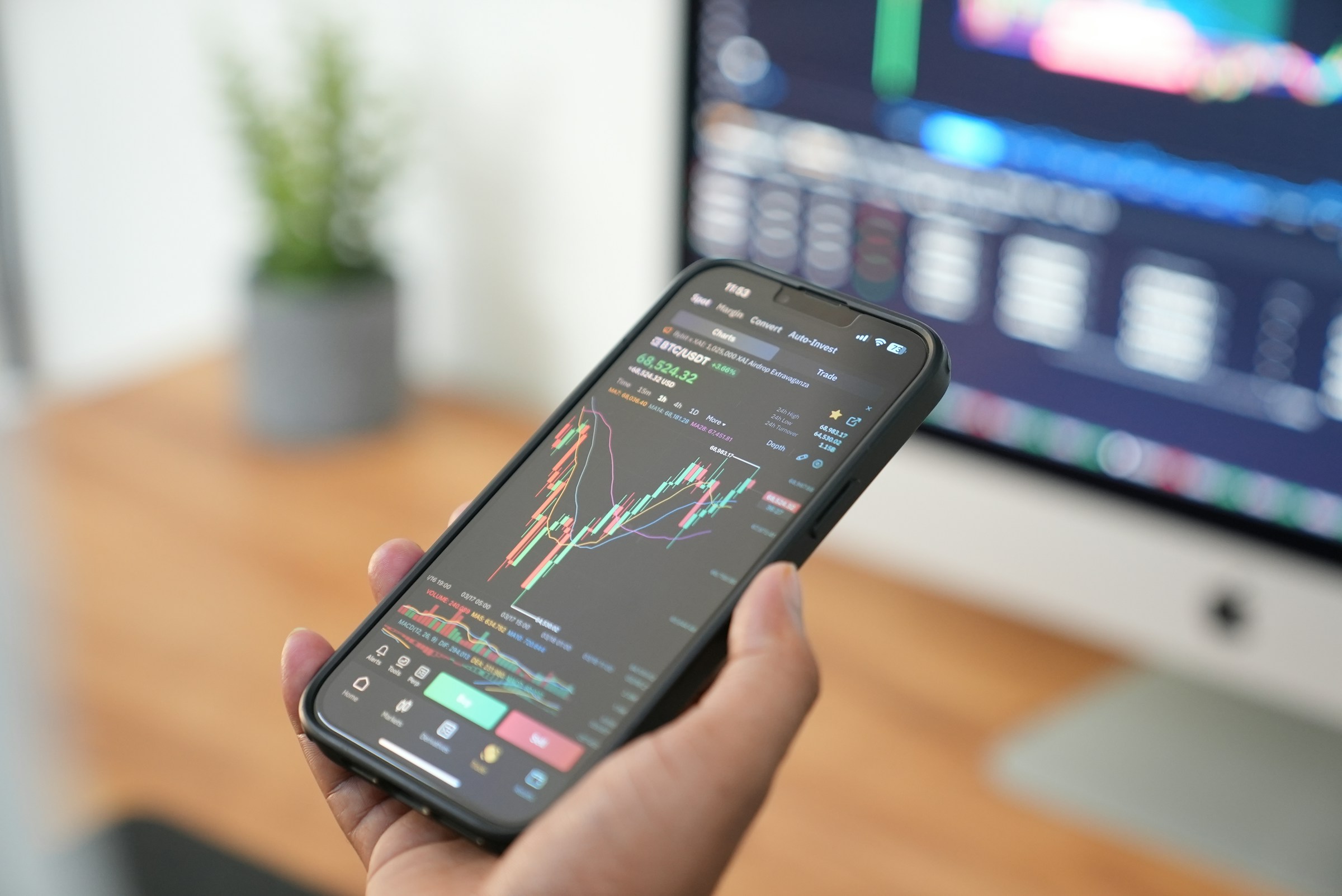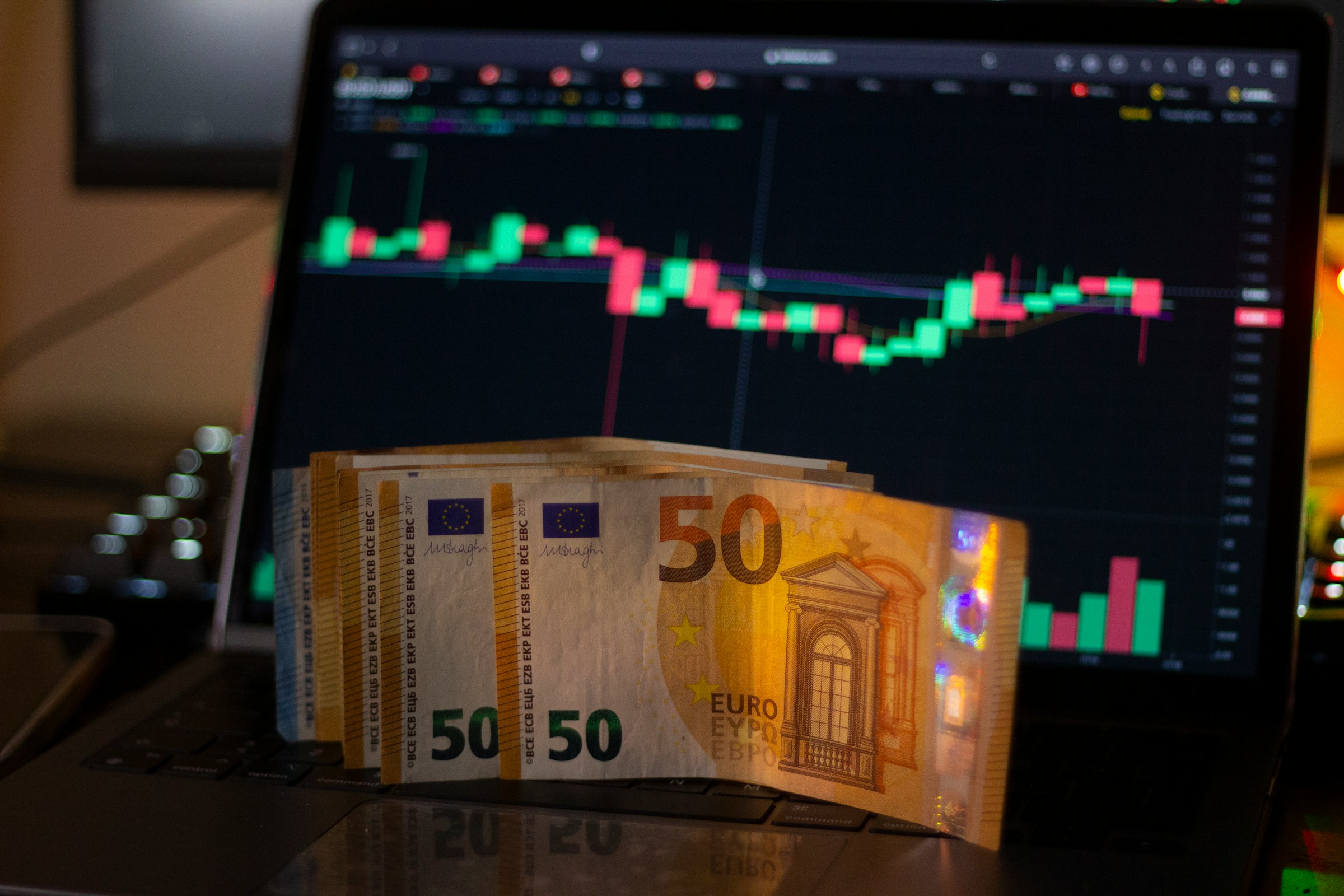How Much Money Do You Need to Start Trading
Find out how much money do you need to start trading, including key factors that influence startup costs and tips for beginners.

So, you’re thinking about diving into trading but aren’t sure how much cash you’ll need to get started. It’s a question most folks ask before dipping their toes into the world of smart money trading.
Whether you're dreaming of a full-time gig or just looking to test the waters, understanding your starting budget can set the stage for your journey. This guide will help you navigate those initial financial steps, enabling you to make the most of your capital from the outset.
Speaking of making the most of what you have, Aqua Funded’s funded trading program offers a great way to maximize your trading potential with the resources you have.
Is Trading Profitable?

Yes, some individuals manage to carve out a successful career from day trading. However, the majority struggle. Those much-publicized GameStop millionaires were anomalies, buoyed by a surge of enthusiasm and media spotlight. Many ran into obstacles when attempting to cash out.
Ultimately, they were fortunate guesses. Hilla Skiba, an associate professor at Colorado State University, describes this type of trading as pure speculation, akin to flipping a coin. Most day traders worldwide make incorrect bets and lose money.
How Many Day Traders Make Money?
For every headline-grabbing news story or viral meme, countless retail traders lose significant amounts of money daily. The odds are stacked against you, and research supports this. A key study found that 97% of day traders are likely to lose money in futures trading. Remarkably, a second, unrelated study found the same outcome. It observed nearly 20,000 day traders over a period of 300 days, and 97% of them lost money.
What Percentage of Traders Give Up?
Moreover, only 7% of this group stuck it out for the entire duration; most quit within 50 days. Another study found that fewer than 1% of day traders can consistently and reliably earn meaningful returns after accounting for fees. Despite promises of massive overnight gains on social media, this is the reality for only one in every 100 individuals.
How Much Money Do You Need to Start Trading

Trading isn’t just about clicking buttons and hoping for the best. You need to know how much money you’re willing to risk. This is your trading capital, the amount you’re comfortable losing without messing up your life. It’s separate from your savings and emergency funds. Think of it as your play money in the market.
Start with a realistic amount. Experts suggest only using 5% to 10% of your investable assets as trading capital. As you get the hang of things, you can scale up. Trading is a long game. Don’t rush it.
Get Real with Your Money Situation
Before you jump in, take a hard look at your finances. Figure out your net worth. Add up your assets, such as savings, investments, and property. Subtract your debts, like mortgages and credit cards. That’s your net worth. But don’t use all of it for trading.
Also, review your monthly income and expenses. Ensure you’ve your living costs, debts, and savings covered. The leftover cash is your discretionary income, some of which can go into trading.
Don’t forget about an emergency fund. Most pros recommend having at least three to six months of living expenses saved up. This keeps you from dipping into your trading funds if life throws a curveball.
Your Risk, Your Rules
Trading is risky. Only use money you can afford to lose. Younger individuals might be more willing to take risks since they have more time to recover. If you’re closer to retirement, you might want to play it safer.
Remember, your trading cash isn’t just for making trades. You’ll need to cover fees, commissions, and taxes on profits. Plus, having extra money gives you a buffer against losses and more room to maneuver.
Start Small, Think Big
With your finances sorted, set realistic expectations. Your trading strategy will dictate how much capital you need. Position or swing trading may require a larger stash due to longer holds and potential losses. Scalping or day trading could be more accessible with less cash since they involve shorter holds and smaller positions.
Risk management is key. A rule of thumb is to risk no more than 1% to 2% of your account on a single trade. More capital means you can spread out your risk across different positions, giving you more flexibility.
Emotions Matter
Your trading capital can mess with your head. Too little cash can lead to stress and risky moves to make up for it. Too much can lead to laziness or a lack of discipline. Find the right balance to keep a clear head.
Brokers have their minimum deposit requirements. Some are beginner-friendly with low minimums, while others target experienced traders with higher standards. Make sure your chosen broker aligns with your budget.
Related Reading
- How Long Does It Take to Learn Trading
- What Challenges Do Traders Face?
- How to Multiply Your Money
- Futures vs Stocks Trading
- Why is Trading So Hard
- How to Swing Trade
- How to Start Trading With No Money
7 Tips for Successful Prop Firm Trading
.jpeg)
1. Aqua Funded: A Game-Changer for Traders
AquaFunded is a standout option for traders wanting to leverage their skills without risking their funds. With access to accounts up to $400,000, this firm offers a unique opportunity to trade in a flexible environment. Forget about rigid time limits and stressful profit targets.
AquaFunded lets you prove your skills through customizable challenge paths or dive right in with instant funding. Plus, you can keep up to 100% of your earnings. Join over 42,000 traders who’ve already collected more than $2.9 million in rewards, all with a 48-hour payment guarantee.
2. Crafting Your Strategy: Momentum and Mean Reversion
To succeed in prop trading, you need a strategy that fits your style and market conditions. Momentum trading is popular. It involves identifying stocks or assets that are moving dramatically in one direction and riding that wave.
Look for high-volume stocks that break past resistance levels or exhibit strong relative strength. Enter early to capitalize on significant gains. Alternatively, mean reversion relies on the idea that prices will return to their historical averages. You’ll target overbought or oversold markets, often using indicators like the RSI or MACD to find reversal points. Both strategies require a solid grasp of market dynamics and ongoing learning.
3. Mastering Risk Management: Position Sizing and Stop-Losses
Effective risk management is crucial in prop trading. Position sizing helps you determine how much to risk per trade based on your portfolio size and risk tolerance. A good rule is to risk no more than 1-2% of your capital on a single trade.
This limits the impact of losses while allowing growth. Stop-loss orders are another essential tool. They automatically close your position at a predetermined level, limiting potential losses. You’ll need to understand market volatility and key levels to place them effectively. Regularly reviewing your performance and refining your strategy will also boost your risk management.
4. The Role of Prop Firms: Capital, Tools, and Collaboration
Prop firms are both a training ground and a financial partner for traders. They provide access to capital, allowing you to take larger positions without risking your own money. This is especially helpful if you’re skilled but lack resources. These firms also offer advanced trading platforms and tools to enhance your market analysis and execution.
Beyond financial support, prop firms foster collaboration. Many encourage knowledge sharing and mentorship, letting less experienced traders learn from veterans. This culture can improve trading strategies and overall performance. Plus, established relationships with brokers and exchanges mean better execution prices and lower costs.
5. Mindset Matters: Developing a Winning Attitude
The psychological side of trading is critical. A winning mindset requires discipline and patience, as emotional decisions can lead to losses. Develop a comprehensive trading plan that includes specific goals, practical strategies, and robust risk management techniques. Stick to it, even during volatile times. Self-reflection is also key. Regularly assess your performance, noting strengths and weaknesses. Keeping a trading journal can help. Document your trades, emotions, and lessons learned. This encourages accountability and continuous improvement.
6. Leveraging Technology: Algorithms and Machine Learning
In today’s fast markets, technology is more critical than ever. Advanced trading platforms equipped with sophisticated algorithms enable you to execute orders quickly and analyze market data in real-time. Many prop firms invest in this tech to give you an edge. Algorithmic trading is also popular. It lets you capitalize on market inefficiencies by executing trades at lightning speed. Machine learning techniques are being integrated into strategies, enabling systems to adapt and improve their accuracy. Embracing these advancements gives you a competitive edge.
7. Building a Successful Career: Training and Networking
Building a successful career as a prop trader takes dedication and adaptability. Seek out reputable prop firms with strong training programs. Networking is also vital. Attend conferences or join online forums to connect with like-minded traders and share insights.
Maintain a growth mindset. Markets change, so what works today might not work tomorrow. Stay open to new ideas and adapt your strategies. Continuous education through books, courses, or mentorship helps you refine your skills and expertise. Embrace the challenges and opportunities of prop trading for long-term success.
How to Trade for Free With Prop Firm Demo Accounts

Prop firm demo accounts are like training wheels for traders. They let you practice your strategies and manage risk without putting your own money on the line. You’ll get to test the waters in a simulated market environment. Here's how to make the most of these accounts:
1. Use Them Without Stress: Why Demo Accounts Are a Game-Changer
Zero Risk
With virtual funds, you can trade without worrying about losing real cash.
Plan Your Moves
Refine your trading strategies before diving into the market.
Learn the Ropes
Get comfortable with the trading platform’s features.
Manage Risk
Practice setting stop-loss orders and managing position sizes.
2. Getting Set Up: How to Start Trading with a Demo Account
Pick a Good Firm
Choose a prop firm with a solid reputation.
Learn the Platform
Take the time to understand order types, charting tools, and other key features.
Make a Plan
Develop a structured trading plan with clear goals.
Stay Disciplined
Treat the demo like it’s a live account to build good habits.
Review Your Trades
Analyze your performance and adjust your strategies.
3. Focus on These Essentials: Key Aspects to Nail in Demo Trading
Risk Management
Become familiar with techniques such as setting stop-losses and managing drawdowns.
Trading Psychology
Learn to manage emotions that can cloud your judgment.
Stay Consistent
Aim for steady performance over time to catch a prop firm’s eye.
Test Strategies
Experiment with different approaches in various market conditions.
4. Make the Leap: Transitioning to a Funded Account
Meet the Standards
Demonstrate your ability to handle the demo account effectively, and then proceed to the firm’s evaluation process.
Pass the Test
and complete the evaluation to gain access to a funded account.
Profit and Withdraw
Once funded, you can earn and take real profits according to the firm’s terms.
Want to turn your trading skills into substantial profits without risking your capital? AquaFunded's funded trading program offers accounts of up to $ 400,000 with flexible conditions. Join over 42,000 traders worldwide and start trading today.
Related Reading
- What Happens if You Blow a Funded Account
- How to Become a Professional Trader
- Best Market to Trade for Beginners
- Tips for Day Trading
- Common Trading Mistakes
- Margin vs Leverage
- How Much Can You Make Day Trading With 100k
- Scalping Trading Strategy
- Margin vs Leverage
- Day Trading vs Options
- Best Time Frame for Day Trading
Join Our Funded Trading Program Today - Trade with our Capital and Keep up to 100% of the Profits.
Ever wondered how much money you need to start trading? AquaFunded offers a solution that requires zero personal capital. Imagine having access to accounts of up to $ 400,000 to trade in the markets with no time pressure and flexible trading conditions. AquaFunded enables you to demonstrate your skills through a challenge or begin trading immediately with instant funding options. And the best part? You keep up to 100% of your profits.
Easy-to-Achieve Profit Targets and No Time Limits
When trading, time can feel like your worst enemy. AquaFunded alleviates this stress by offering no time limits on their challenges, allowing you to trade at your own pace. Plus, their profit targets are easy to achieve, so you can start earning sooner. With AquaFunded, you can focus on improving your trading skills instead of worrying about deadlines.
Join Over 42,000 Traders Worldwide and Collect Rewards
AquaFunded has already helped over 42,000 traders worldwide collect more than $2.9 million in rewards. This community of traders is a testament to the platform’s success and reliability. When you join AquaFunded, you're joining a network of traders who are all working towards the same goal: financial independence through smart trading.
Benefit from a 48-Hour Payment Guarantee
Nobody likes waiting for payments. That’s why AquaFunded offers a 48-hour payment guarantee. Once you’ve reached your profit target, you’ll receive your payout within two days. This ensures you can enjoy the fruits of your labor without unnecessary delays.
Customize Your Trading Path and Keep Up to 100% of Your Earnings.
AquaFunded offers customizable challenge paths, allowing you to tailor your trading experience to suit your style and preferences. Whether you prefer to start trading immediately with instant funding or want to prove your skills through a challenge, AquaFunded has an option for you. Plus, you can keep up to 100% of your earnings so that you can reap the full rewards of your hard work.
Related Reading
- Why Do Most Day Traders Fail
- Is Day Trading Profitable
- How to Take Profits in Trading
- Fair Value Gap Trading
- Best Time of Day to Trade Stocks
- How to Make Money Online Trading
- Prop Firms With No Time Limit
- Different Stock Trading Strategies
- Swing Trading Prop Firms
- Best Technical Indicators for Day Trading


